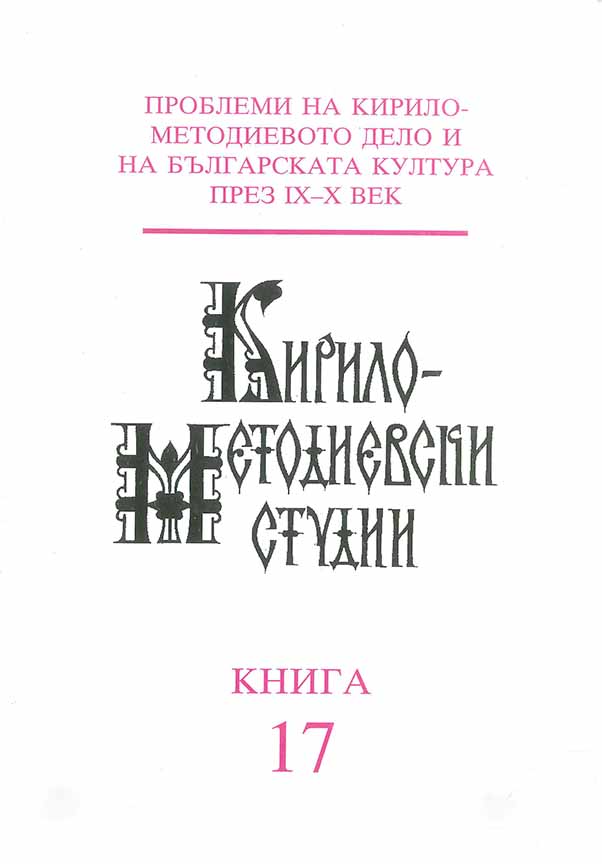От еретик до светец: еволюция на Методиевия образ в западната традиция
From Heretic to Saint: the Evolution of the Image of Methodius in the Western Tradition
Author(s): Krassimir Stanchev, Anna Vlaevska-StanchevaSubject(s): Language studies, Language and Literature Studies
Published by: Кирило-Методиевски научен център при Българска академия на науките
Summary/Abstract: The paper traces the evolution of the image of Methodius, the First Teacher of the Slavs, in the West European tradition. It is pointed out that the posthumous destinies of the images of the two Thessalonica brothers differ: while people in both East and West began venerating Constantine-Cyril as a saint at a very early date, the idea as to the holiness of Methodius was accepted with difficulty and rather late in the Catholic Church. The following points are discussed as proofs: - the frescoes from the 9th century in the San Clemente Basilica in Rome, where only one of the brothers has a saint's halo; - the one and only mentioning of Methodius in "The History of the Archbishops of Salona and Split" by Thomas, archdeacon of Split (1200-1268), where Methodius, the First Teacher of the Slavs, is called a heretic; - Chronica Bohemorum by Cosmas of Prague (died 1125), where Methodius is called Venerabili Metudio, evidence of an early phase of a cultus; - the edict of Emperor Charles IV of 1347 for the building of the Emmaus Benedictine Monastery in Prague: the first formal act issued with the blessing of Pope Clement VI, where the names of Cyril and Methodius are given among the names of the patron-saints of the Czech Kingdom; - the introduction for the first time in the Catholic Church of the liturgical celebration of Cyril and Methodius, an introduction made by Jan Volk, bishop of Olomouc, in 1349; - the way the theme about Cyril and Methodius is treated in Historia Bohemica by Aeneas Sylvius Piccolomini (1405-1464, after 1458 Pope Pius II) and after that by the German humanists Nauclerus and Aventinus and by the Venetian scholar Cipelli; - the story about Cyril and Methodius in Historia Regni Bohemiae (1552) by Jan Dubravsky and the revised version of that story in "The Vitae of the Holy Bishops Cyril and Methodius Called Apostles of the Moravians and the Slavs", a version made by the Roman presbyter A. Gallonio (died 1606). The latter was linked with the circle of cardinal Caesar Baronius, whose Martyrologium Romanum (first edition -1583) speaks under the date of 9th March about "the holy bishops Cyril and Methodius". This is the first formal introduction of their commemoration into the formal calendar of the Roman Church. A separate study is made of the comparatively independent Benedictine tradition in the treatment of the images of Cyril and Methodius, which culminates in the Menologion of G. Bucelin published in 1655, where under the date of 9th March, just as in the martyrology of Baronius (and on the basis of the calendar note in his martyrology), and once again under the date of 16th March, a commemoration is made, much more extensively, of Cyril and Methodius, "bishops in Moravia", and apostles of the Slavs. In the end (§ 7) the paper discusses a mediaeval fresco now kept in the Benedictine abbey in Assisi and points out that there is no reason to view it as an early depiction of St. Benedict together with SS Cyril and Methodius - a motif which did not exist before the three saints were proclaimed as co-patrons of Europe by Pope John Paul II on 31st Dec., 1980.
Journal: Кирило-Методиевски студии
- Issue Year: 2007
- Issue No: 17
- Page Range: 687-701
- Page Count: 15
- Language: Bulgarian
- Content File-PDF

